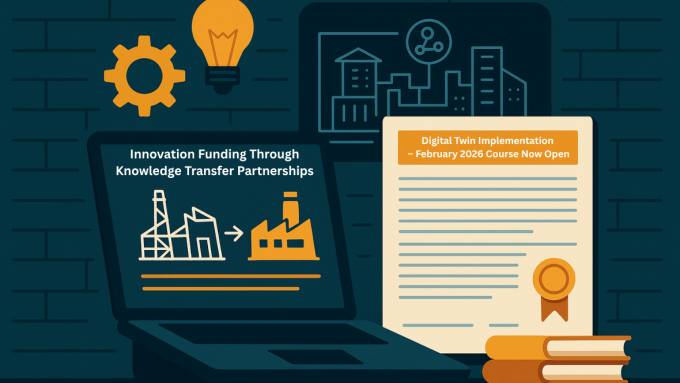IES is delighted to announce the launch of a new collaborative whitepaper which aims to foster improved collaboration between AEC practitioners and building operators to bridge the performance gap and decarbonise our buildings. The whitepaper advocates for a more open utilisation of digital assets and new mechanisms to overcome legal hurdles which currently impair their use as methods to accelerate the decarbonisation of buildings. Spearheaded by IES, the paper brings together influential voices from across the built environment sector to discuss the importance of whole-life performance modelling and the challenges and barriers associated with industry adoption of this approach. Insight is also drawn from an industry-wide survey of 240+ AEC professionals, building owners and occupiers. The paper introduces IES’ Sleeping Digital Twin initiative – the theory that dormant 3D design, compliance and BIM models which exist for the majority of the current building stock can be evolved into performance digital twins which are usable across the whole building lifecycle. It is the process of unlocking these models for new use where the spirit of collaboration and openness is required. Significant questions relating to intellectual property, ownership and legal ramifications were cited as reasons for models not currently being shared with 58% of AEC consultants surveyed selecting legal implications as the main barrier to model sharing. With the sector overtly committed to driving down carbon emissions in both new build and retrofit projects, the use of these ‘sleeping’ models would unlock vast carbon savings and enable the delivery of better outcomes for building owners, occupiers and designers. Titled ‘Sleeping Digital Twins: Exploring the appetite, benefits, and challenges of whole-life building performance modelling’, the whitepaper features viewpoints from the UKGBC, CIBSE, Introba, Sweco, Gafcon Digital, HOK, HLM Architects, Perth & Kinross Council, the University of Birmingham, and the University of Glasgow. Key themes discussed within the whitepaper include: the current uptake of whole life performance modelling and the appetite for change; challenges and barriers to progress; benefits of adopting this approach; and ownership and accessibility of models. It concludes with a series of next steps that can help towards industry-wide uptake of whole-life performance modelling to move away from a culture of compliance and optimise building performance. Don McLean, Founder and CEO of IES, said: “Whilst the government is backtracking on net-zero policies, the built environment sector is making strides towards change. As an industry, we are united on the need to decarbonise the world’s buildings as efficiently as possible to mitigate the worst effects of climate change. “We’ve led the creation of this whitepaper to highlight the importance of utilising technology which supports whole-life performance modelling to meet net-zero targets. The tools for change already exist but are not used to their full potential which is where the Sleeping Digital Twins initiative comes in. The industry is waking up to the benefits of this method, but there are still many barriers to overcome. “As a result, we need a new approach which begins with greater collaboration. A spirit of openness is needed to thaw engrained approaches and unlock the potential we have at our fingertips. There is clear appreciation for the need for better use of digital assets. 83% of AEC consultants and 66% of clients agree that better utilisation of energy models in building operation can help us achieve net-zero goals. Now, we need to take the first steps towards creating this change. “This whitepaper is just the beginning of an important conversation, and we hope that it will be both informative and instructive for AEC practitioners and building operators. It aims to act as a catalyst for a shift towards better use of digital assets, closing the performance gap and decarbonising our building stock.” Download the whitepaper To mark the launch of this landmark paper, IES and a selection of industry contributors also teamed up with The B1M for a live online panel debate to discuss the challenges and benefits of whole-life performance modelling and the Sleeping Digital Twin approach. The session is now available to watch on demand at the link below, Watch on demand


Leave a comment